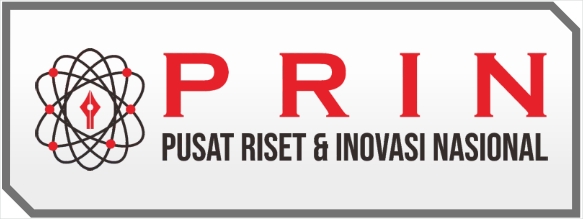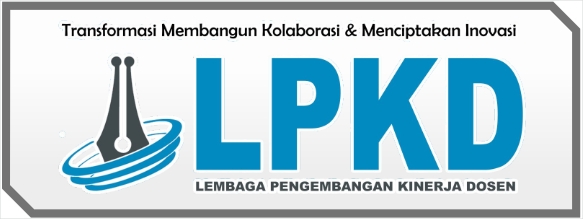Peran Fisioterapi Pada Individu Dengan Hemiparesis Sinistra Post Stroke : A Case Study
DOI:
https://doi.org/10.55606/jurrike.v3i1.2792Keywords:
stroke, hemiparesis, NMES, exercise therapyAbstract
Introduction: Stroke occurs when the blood supply to the brain is blocked and blood vessels in the brain burst. The brain can't get the blood and oxygen it needs, so brain cells die. In this case, the patient complained of a feeling of weakness and heaviness in the left side of the body, which made it difficult for him to carry out everyday activities. Objective: To determine the role of physical therapy in individuals with left hemiparesis after stroke on muscle strength, spasticity, and functional ability using infrared intervention, electrical stimulation, and exercise therapy. Method: Subjective and objective examinations were carried out, followed by physiotherapeutic intervention in 3 weeks. Results: After physiotherapeutic intervention, the results showed an increase muscle strength using manual muscle testing (MMT) of the hip muscle group T1=2 to T3=2+, the knee muscle group T1=2 to T3=-3. Reduced muscle tone according to the Asworth scale in the shoulder area T1=1+ to T3=1, as well as functional ability according to the Barthel index with results from T1=65 to T3=70. Conclusion: Physiotherapeutic interventions using infrared, electrical stimulation, and exercise therapy can increase muscle strength, reduce spasticity, and improve functional ability in individuals with left-sided hemiparesis after stroke
References
Cho, K. H., & Park, S. J. (2020). Effects of joint mobilization and stretching on the range of motion for ankle joint and spatiotemporal gait variables in stroke patients: Joint mobilization and stretching in stroke. Journal of Stroke and Cerebrovascular Diseases, 29(8). https://doi.org/10.1016/j.jstrokecerebrovasdis.2020.104933
Chohan, S. A., Venkatesh, P. K., & How, C. H. (2019). Long-term complications of stroke and secondary prevention: An overview for primary care physicians. In Singapore Medical Journal (Vol. 60, Issue 12, pp. 616–620). Singapore Medical Association. https://doi.org/10.11622/smedj.2019158
Ferry, B., Compagnat, M., Yonneau, J., Bensoussan, L., Moucheboeuf, G., Muller, F., Laborde, B., Jossart, A., David, R., Magne, J., Marais, L., & Daviet, J. C. (2022). Awakening the control of the ankle dorsiflexors in the post-stroke hemiplegic subject to improve walking activity and social participation: the WAKE (Walking Ankle isoKinetic Exercise) randomised, controlled trial. Trials, 23(1). https://doi.org/10.1186/s13063-022-06545-w
Hong, Z., Sui, M., Zhuang, Z., Liu, H., Zheng, X., Cai, C., & Jin, D. (2018). Effectiveness of Neuromuscular Electrical Stimulation on Lower Limbs of Patients With Hemiplegia After Chronic Stroke: A Systematic Review. In Archives of Physical Medicine and Rehabilitation (Vol. 99, Issue 5, pp. 1011-1022.e1). W.B. Saunders. https://doi.org/10.1016/j.apmr.2017.12.019
Kanase, S. (n.d.). EFFECT OF INTRINSIC AND EXTRINSIC MUSCLE TRAINING ON QUALITY OF HAND FUNCTIONS IN STROKE PATIENTS. https://www.researchgate.net/publication/348087699
Kuriakose, D., & Xiao, Z. (2020). Pathophysiology and treatment of stroke: Present status and future perspectives. In International Journal of Molecular Sciences (Vol. 21, Issue 20, pp. 1–24). MDPI AG. https://doi.org/10.3390/ijms21207609
Kwong, P. W. H., Ng, S. S. M., Chung, R. C. K., & Ng, G. Y. F. (2017). A structural equation model of the relationship between muscle strength, balance performance, walking endurance and community integration in stroke survivors. PLoS ONE, 12(10). https://doi.org/10.1371/journal.pone.0185807
Lee, S.-M., & Kim, D.-H. (2020a). Effects of sensory stimulation on upper limb strength, active joint range of motion and function in chronic stroke virtual reality training. Phys Ther Rehabil Sci, 2020(3), 171–177. https://doi.org/10.14474/ptrs.2020.9.3.171&domain=pdf&date_stamp=2020-9-25
Lee, S.-M., & Kim, D.-H. (2020b). Effects of sensory stimulation on upper limb strength, active joint range of motion and function in chronic stroke virtual reality training. Phys Ther Rehabil Sci, 2020(3), 171–177. https://doi.org/10.14474/ptrs.2020.9.3.171&domain=pdf&date_stamp=2020-9-25
Leonard Angliadi, S. S., & Sam Ratulangi -RSUP D Kandou Manado, U. R. (n.d.). Pengaruh mobilisasi dan rangsangan taktil secara bersamaan terhadap pemulihan motorik anggota gerak atas pada pasien stroke.
Ma, S. R., & Yang, B. Il. (2019). The effects of task application after hand intrinsic muscle treatment on decreasing unilateral spatial neglect in stroke patients. Medico-Legal Update, 19(1), 407–412. https://doi.org/10.5958/0974-1283.2019.00077.X
Murphy, S. J., & Werring, D. J. (2020). Stroke: causes and clinical features. Medicine.
Ravichandran, H., & Janakiraman, B. (2021). The Effects of Ankle Joint Mobilization on Dorsiflexion Range and Gait Parameters in Chronic Stroke Survivors: A Systematic Review and Meta-analysis. Journal of Stroke Medicine, 4(1), 15–24. https://doi.org/10.1177/2516608520982874
Riskesdas. (2018). Report on result of National Basic Health Research. The National Institute of Health Research and Develompment Ministry of Health Republic of Indonesia.
Shahid, J., Kashif, A., & Shahid, M. K. (2023a). A Comprehensive Review of Physical Therapy Interventions for Stroke Rehabilitation: Impairment-Based Approaches and Functional Goals. In Brain Sciences (Vol. 13, Issue 5). MDPI. https://doi.org/10.3390/brainsci13050717
Shahid, J., Kashif, A., & Shahid, M. K. (2023b). A Comprehensive Review of Physical Therapy Interventions for Stroke Rehabilitation: Impairment-Based Approaches and Functional Goals. In Brain Sciences (Vol. 13, Issue 5). MDPI. https://doi.org/10.3390/brainsci13050717
Yang, Y. R., Mi, P. L., Huang, S. F., Chiu, S. L., Liu, Y. C., & Wang, R. Y. (2018). Effects of neuromuscular electrical stimulation on gait performance in chronic stroke with inadequate ankle control - A randomized controlled trial. PLoS ONE, 13(12). https://doi.org/10.1371/journal.pone.0208609
Ynag, D.-J., & Uhm, Y.-H. (2020). Effects of Various Types of Bridge Exercise on the Walking Ability of Stroke Patients. The Journal of Korean Physical Therapy, 32(3), 137–145. https://doi.org/10.18857/jkpt.2020.32.3.137
Zulfatirrohman, A. I., Naufal, A. F., & Nasuka, M. (2023). Physiotherapy Management in Cases of Spasticity Hemiparese Sinistra ec Ischemic Cerebrovascular Accident a Case Report. FISIO MU: Physiotherapy Evidences, 4(3), 205–214. https://doi.org/10.23917/fisiomu.v4i3.20738
Downloads
Published
How to Cite
Issue
Section
License
Copyright (c) 2024 JURNAL RISET RUMPUN ILMU KEDOKTERAN

This work is licensed under a Creative Commons Attribution-ShareAlike 4.0 International License.
















